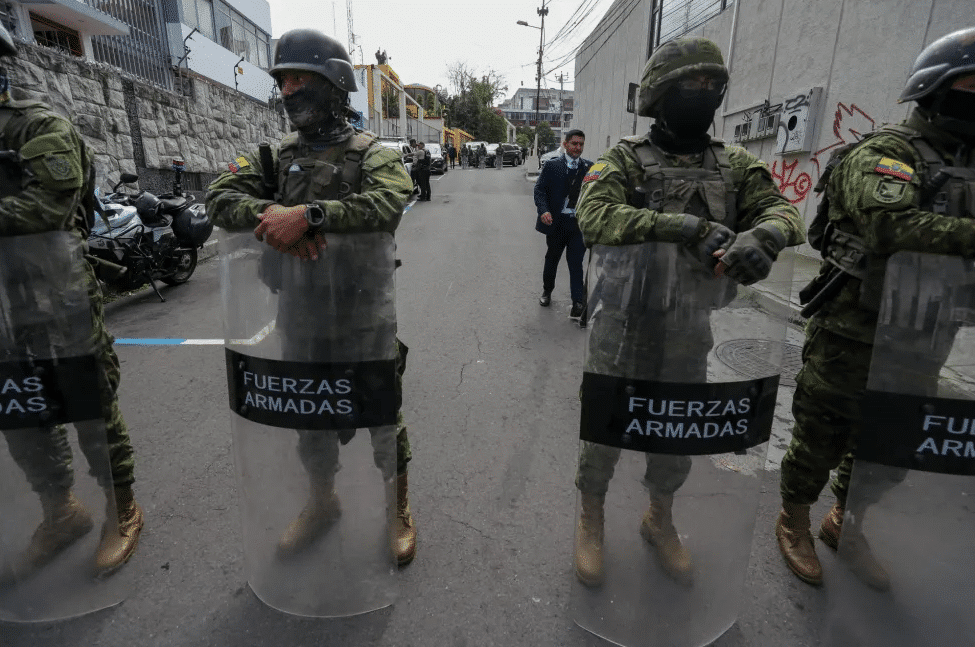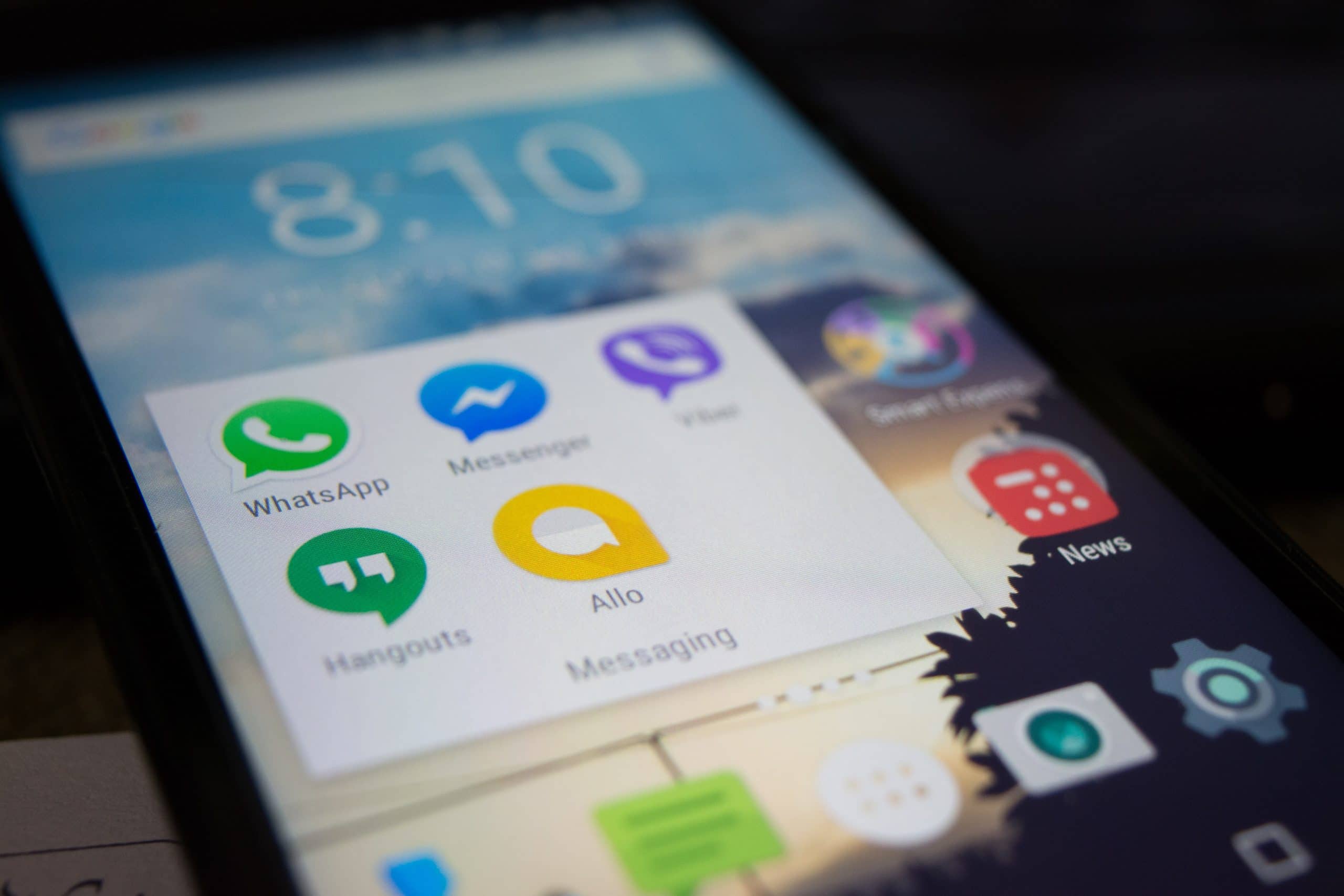29 de enero 2021

The Return of the Military

PUBLICIDAD 1M
PUBLICIDAD 4D
PUBLICIDAD 5D
Despite limitations and the risk of suspension, Whatsapp has facilitated a closer relationship between audiences and media outlets

In 2016 La Prensa began using WhatsApp to distribute content, as part of the media outlet's special coverage of the November general elections of that year in Nicaragua. The idea of the "experiment", according to the head of digital information Dora Luz Romero, was to tell people in real-time, how the elections were developing. But the acceptance was such that to date they have had to enable two telephone lines to send news articles to their subscribers.
WhatsApp is not at all intended for the benefit of the media, in fact sending mass messages is a risky practice that could lead to temporary or permanent suspension of the service. Despite the limitations and challenges that this platform represents, independent media in Nicaragua found in it a way to have a more "intimate" relationship with their readers.
And why wouldn’t you consider the most widely used messaging platform to be part of a comprehensive strategy? In February 2020, WhatsApp made public that it had reached two billion users worldwide.
Statista, the data and statistics platform, reported 2.96 million active users on the instant messaging application in Nicaragua until 2020. According to the ranking, of the 23 countries listed in Latin America, Nicaragua ranks fourteenth, with more users than El Salvador (2.88 million), Panama (2.79 million), and Uruguay (2.55 million).
"We decided that as a media we wanted to see how we could reach people, how to integrate ourselves into that ecosystem that is usually used among friends and family, and see how we could get in there to provide news," says Romero about La Prensa's strategy.
Álvaro Navarro, creator, and director of Artículo 66 did not start using WhatsApp to generate traffic either, he did it because the media outlet produced a podcast that summarized the most important news of the day and they were looking for a direct way to send the audio file to their followers, and the messaging application turned out to be the ideal option. When they surpassed one thousand subscribers, they knew they had discovered a new tool to interact with their audience.
What readers do not know is that behind every message or news alert that reaches their cell phone, there is a whole process that can become complicated depending on the number of subscribers. And the fact is, that the lack of knowledge about tools to manage WhatsApp and the high costs that these can have, mean that the Nicaraguan media that use this platform to send content do it manually, from a cell phone, like any other user.
A person interested in subscribing to the alerts sends a message to the enabled line, the person in charge of administering the cell phone saves the contact and adds it to a mailing list. Before sending an alert, a short, descriptive message is composed and a link is added, and then the same message is sent to each mailing list separately. With a greater number of contacts and broadcast lists, sending a breaking news alert can make the smartphone crash.
"We've had to change phones about three times. We started with a basic phone, because we thought 'it's only for WhatsApp, it doesn't need to be a big thing, or have a big capacity' but suddenly we realized that it was getting stuck, so we had to move to a high-end one and then I had to get rid of my high-end personal cell phone to use it for WhatsApp," confesses Navarro.
The administration of this platform can become so overwhelming that at La Prensa, they have temporarily opted to stop promoting the invitation to subscribe on their social networks. "Every time we share the post and invite people to subscribe, the person in charge of WhatsApp can spend days registering new numbers and adding them to the mailing lists," says Romero.

Photo: Pexels.com | Creative Commons
Automatic, massive, or unwanted messages, using lists of contacts you don't know and excessive use of broadcast lists, are some "unwanted" practices that could lead to the suspension or deletion of a WhatsApp account. Several of them, if not all, are actions that the media platform engages in when distributing news with this application, although without knowledge of malice.
For Romero, the main difficulty for the media that use the messaging platform as another channel for distributing their content is "that WhatsApp does not make the difference between 'this is a media outlet and this is a person sending spam (unwanted content)'". La Prensa has already experienced the temporary suspension of its line of news alerts because the sending behavior seemed suspicious to the application.
Those who venture to continue using this distribution channel do so because the risks are worth it. For La Prensa, WhatsApp leads to more visits to the website than the newsletters sent by email, while for Article 66 it represents the fourth source of traffic, after social networks.
To circumvent the risk of suspension, the media has been forced to reformulate its strategy, decreasing the quantity and frequency of mailings and prioritizing higher-value content produced from the newsroom.
On the other hand, Navarro sends all the articles that Artículo 66 produces during the day, especially the last-minute ones, without having had any impediment or temporary block to date.
People’s permanent access to WhatsApp facilitates the interaction of audiences with the media, because they receive information through the messaging application as well as sending it. This, in addition to creating an opportunity for feedback, also facilitates the inclusion of citizen reports in the news agenda.
While people on Facebook send more text, graphic sources predominate in the messages that Article 66 receives through WhatsApp. This makes it easier for the media to obtain photos and videos from areas where they do not have coverage or places they cannot reach due to time or logistical reasons.
In January 2020, Confidencial made a line of information alerts available to its readers, to distribute content through WhatsApp. In less than a year, subscribers to the platform already number more than 3,700.
"The WhatsApp news alerts line has diversified the content distribution channels and has also emerged as a new space for direct exchange with the audience, something that in other mass-use networks is becoming more complex every day," says Arlen Cerda, editor of Confidencial.
Although CONFIDENCIAL's WhatsApp was created to send information, it has gradually become a citizen reporting line. In the midst of the population's fear of speaking publicly about issues that challenge the Government or are contrary to the official discourse, subscribers share their testimonies about how they experience repression, the police state, the covid-19 pandemic and their daily problems.
The appropriation of WhatsApp as a platform for citizen reporting has been such that Canal 10 and Canal 12, two channels with national reach, have incorporated as a segment of their star newscasts a space to share denunciations sent by their viewers.
La Prensa's WhatsApp lines "receive an exaggerated amount of messages, every day (...) there are cases in which they send news tips, but sometimes they forward a lot of unreal, exaggerated or false content that circulates on other social networks", warns Romero.
Although the platform is useful for the distribution of content, it also represents a major problem as it facilitates the distribution of fake news.
A Reuters Institute study published in June 2020 shows that the spread of fake news through Whatsapp has undermined people's trust in this platform as a way of consuming news.
According to the document, 40% of the people surveyed said they had no trust whatsoever in the news circulating through this network, while 24% did have some degree of trust.
Since the beginning of the pandemic, trust in local media remained at 44%, but the consumption of information on Facebook groups and other social networks increased, "which puts more pressure on the media and their business models," the document reads.
The Reuters Institute conducted a survey in 40 countries and in places like Brazil, Chile, or Mexico, people showed more concern about the spread of fake news through messaging applications, especially Whatsapp.
The thing is, there is something particular about this platform: it sends encrypted messages between its users which makes it more difficult to detect information that was manipulated or contains details different than what actually occurred.
To counteract the spread of this false information, Whatsapp took a series of measures that would help control the amount of information being spread from the platform.
Thus, it limited the number of times a message could be forwarded from its platform and enabled its own news verification method by placing a magnifying glass symbol next to messages that have been forwarded many times so that each user could do their own verification.
The same social network alerts its users to verify the information that is forwarded to them, to corroborate with other sources, and also to be very careful when sharing images, videos, or audios that reach them within the platform.
"Image, video, and audio files can be edited to try to trick you. Corroborate the facts of a story through trusted news sites. When a story is published through a variety of trusted sites, there is a greater likelihood that it is true," the platform warns its users on its Q&A site.
In Nicaragua, the media decided to allocate efforts to try to counteract the large amount of false information promoted by users and by the propaganda machine of the Ortega Murillo regime.
In 2018, La Prensa, the largest and oldest newspaper in the country, started an initiative to combat the disinformation circulating in social networks as a result of the April 2018 crisis.
According to an investigation, in the last three years, there were at least six initiatives to verify fake news in the country.
But some were unable to continue those efforts, mainly due to a cost issue. According to the investigation, "NoAgarrésVara", a popular expression that served as a name to verify news on 4to Mono, a digital media platform, did not continue due to lack of personnel.
Similarly, the digital media La Lupa suspended the verification of news. Maryórit Guevara, founder of the digital media, expressed that their verification efforts are still part of the project, and they expect to resume the verification from the social networks with more strength this year.
Guevara argues that they are a small media, they are composed of a team of seven people and sometimes they must "prioritize" certain topics.
But despite all these efforts, fake news continue to be created on social networks and spread among the millions of Whatsapp accounts and compete with the real information shared by the media.
This article has been translated by Ana María Sampson, a Communication Science student at the University of Amsterdam and member of our staff*
Archivado como:
PUBLICIDAD 3M
Confidencial es un diario digital nicaragüense, de formato multimedia, fundado por Carlos F. Chamorro en junio de 1996. Inició como un semanario impreso y hoy es un medio de referencia regional con información, análisis, entrevistas, perfiles, reportajes e investigaciones sobre Nicaragua, informando desde el exilio por la persecución política de la dictadura de Daniel Ortega y Rosario Murillo.
PUBLICIDAD 3D